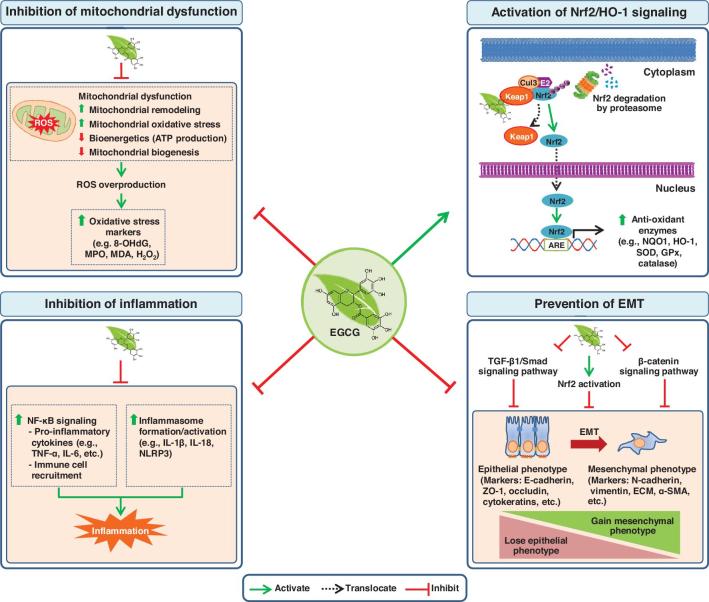FIGURE 1.
Summary of molecular basis on which epigallocatechin-3-gallate (EGCG) prevents chronic kidney disease (CKD) and renal fibrosis based on preclinical evidence. The anti–oxidative stress properties of EGCG are exerted through its inhibition of mitochondrial dysfunction and its induction of antioxidant enzymes via activation of the Nrf2/HO-1 signaling pathway. For its anti-inflammation property, EGCG inhibits NF-κB signaling and inflammasome formation resulting in inhibition of the inflammatory cascade. Moreover, EGCG exhibits an anti-EMT property through various signaling pathways, including TGF-β1/Smad, β-catenin, and Nrf2 pathways, to prevent fibrotic transdifferentiation by the EMT process. Shaded boxes (in light orange) represent molecular events that occur in CKD, which can be inhibited or prevented by EGCG. ARE, antioxidant responsive element; Cul3, cullin-3; E2, E2 ubiquitin-conjugating enzyme; ECM, extracellular matrix; EMT, epithelial mesenchymal transition; GPx, glutathione peroxidase; HO-1, heme oxygenase 1; Keap1, Kelch-like ECH-associated protein 1; MDA, malondialdehyde; MPO, myeloperoxidase; NLRP3, nucleotide-binding domain, leucine-rich repeat-containing family, pyrin domain-containing 3; NQO1, NAD(P)H:quinone oxidoreductase 1; Nrf2, nuclear factor erythroid 2-related factor 2; ROS, reactive oxygen species; SOD, superoxide dismutase; TGF-β1, transforming growth factor-β1; Ub, ubiquitin; ZO-1, zonula occludens-1; α-SMA, α-smooth muscle actin; 8-OHdG, 8-hydroxy-2'-deoxyguanosine.

